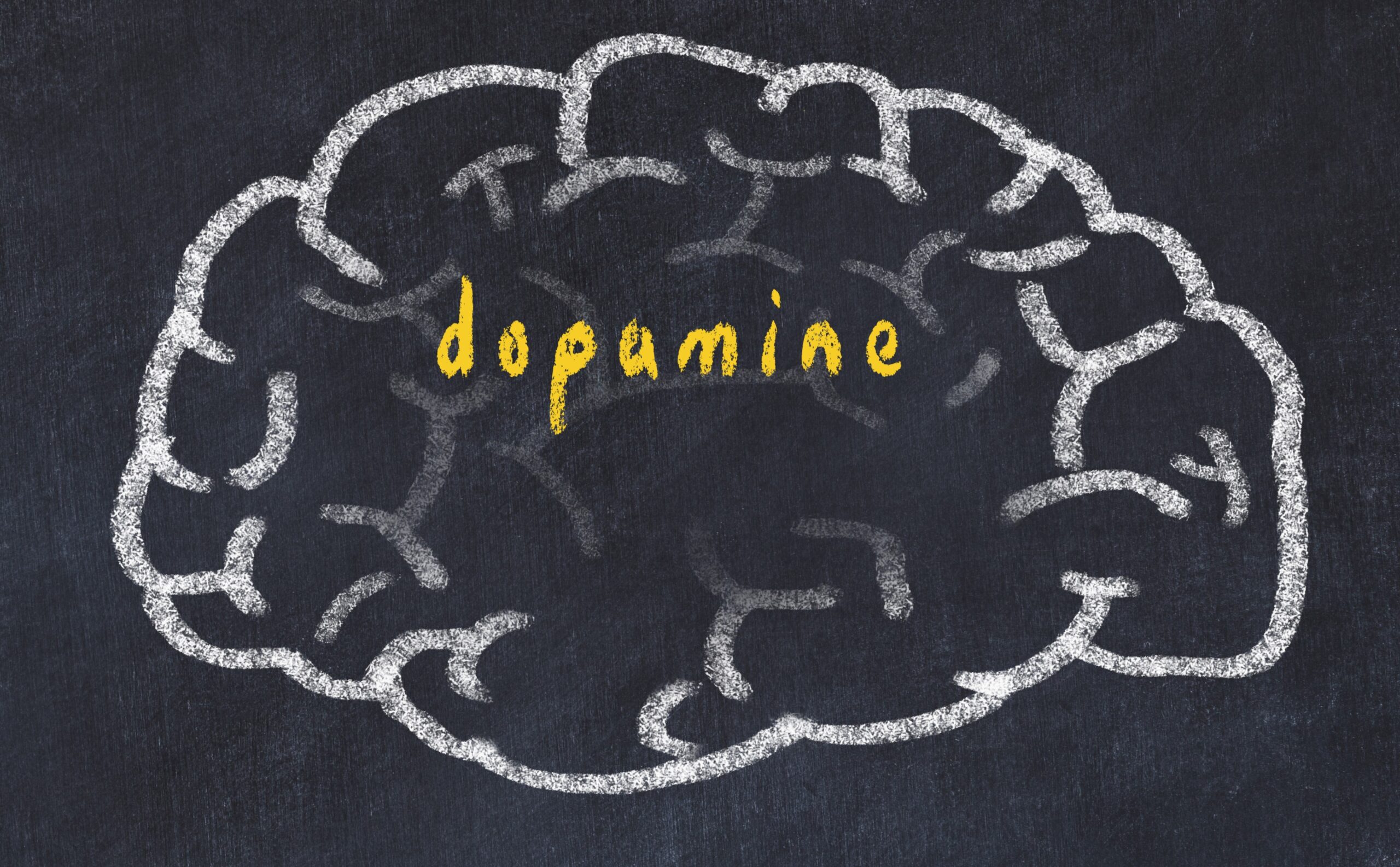It is well-known that the dopamine system is implicated in signaling reward-related information as well as in actions that generate rewarding outcomes. This can be investigated using either Pavlovian and operant conditioning experiments. Pavlovian conditioning describes how your brain makes an association between two situations or stimuli that previously seemed unrelated. A famous example is Pavlov’s experiment, where a dog heard a sound before receiving food. After several such pairings of the sound with food delivery, the sound alone began to cause the dog to salivate. Operant conditioning, or instrumental learning, differs from this in that the behavior of an individual is important to earn a food reward. Meaning that the individual after hearing a sound, has to perform a so-called operant action to receive the reward. In animal experiments, such a operant response is often the pressing of a lever.
Dopamine measurements in nucleus accumbens
In the final PhD paper of Jessica Goedhoop in collaboration with Tara Arbab and Ingo Willuhn from the Netherlands Institute for Neuroscience, they take a closer look at the role of dopamine signaling in learning and motivation. The team directly compared the two conditioning paradigms: male rats underwent either Pavlovian or operant conditioning while dopamine release was measured in the nucleus accumbens, a brain region central for processing this information. During the experiments a cue light was illuminated for a duration of 5 seconds. For the Pavlovian group, a food pellet was delivered into the reward magazine directly after the cue light turned off. For the operant conditioning group, turning off the cue light was followed by extension of the lever below the cue light into the operant box. The lever was retracted after one lever press, which immediately resulted in the delivery of one food pellet reward into the food magazine. If there was no lever press within 5 seconds after lever extension, the lever was retracted and no reward was delivered.
Sustained dopamine release in operant conditioning
Rats in both groups released the same quantity of dopamine at the onset of the reward-predictive cue. However, only the operant-conditioning group showed a subsequent, sustained plateau in dopamine concentration throughout the entire 5-second cue presentation (throughout cue presentation and before lever press). This dopamine sustainment was observed reliably and consistently throughout systematic manipulation of experimental parameters and behavioral training. Therefore, the researchers believe that sustained dopamine levels may be an intermediate between learning and action, conceptually related to the motivation to generate a reward-achieving action.
Ingo Willuhn: ‘There have been a lot of studies on dopamine. We have a decent idea of when dopamine is released in the brain, but there is still lots of discussion on what the precise variables are that determine such dopamine signaling. Essentially discussion on what dopamine “means.” To investigate this, scientists usually perform either Pavlovian or operant conditioning experiments. But they test slightly different things. Both have to do with learning an association between a neutral stimulus and a reward. But operant conditioning requires the motivation to perform an action in addition to that (to earn the reward). Therefore, we compared the two types of conditioning in the same experiment.’
Adding a piece to the puzzle
‘Our results bring together the two camps of scientists that often battle with each other: one says that dopamine is a so-called reward-prediction error signal, meaning that dopamine is released when something better than expected happens, and is suppressed when something worse than expected happens. It is a learning (or teaching) signal. The other camp says that this is not true. They say that dopamine has something to do with motivation. Increased dopamine release will invigorate the subjects and they work harder to get the reward. There have been a few attempts in the past to bring these two camps together, but there is still need for more knowledge on the subject.’
‘What we saw in our study is that only in the operant-learning task dopamine levels stayed high. It seems that the motivation is encoded in this plateau. Reward prediction is the initial dopamine peak, but how much the signal stays up, reflects motivation. Thus, our paper suggests that there is a possibility that dopamine is involved in both, learning and motivation. The next steps will be to get more details out of this. We need to replicate the experiments and make them more sophisticated. The more sophisticated you make it, the more precise our predictions have to be. We are going to build on it and see whether it still holds up.’
Implications
‘Dopamine is not only involved in everyday life but also in disorders such as addiction, Parkinson’s disease, and schizophrenia. Because of the two camps existing, there is disagreement about what happens exactly. For example, some researchers say that when addicts take drugs dopamine release increases and as a consequence all the environmental cues become more meaningful. Addicts learn that these cues are associated with the drug and they take more and more drug, because they are constantly reminded of the drug everywhere. In this view, addiction is misguided learning. Other researchers would say that motivation to take the drug intensifies with more frequent drug intake, because the drug elevates dopamine release. This study indicates that it may be both. Depending on the precise timing, both systems could be the driver, and both could be involved.’
‘This is also relevant for the clinic. Prescribed drugs can influence both learning and motivation systems at the same time: and then it can get messy. If you give schizophrenic patients classic antipsychotic medication, they become slow and cannot act much because their motivation system is down. Parkinson’s patients take pro-dopamine drugs essentially because they lost their dopamine, but some patients start to gamble because their dopamine system is on overdrive suddenly. We cannot influence learning and motivation components separately. As soon as you give a drug it is going to hit all of it, so it is good to keep that in mind.’




